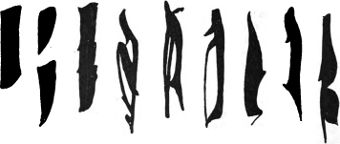Korea
The game of Hanafunda was introduced into Korea by the Japanese and modified somewhat by the Koreans.
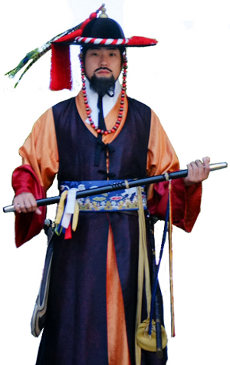
Playing Cards in Korea 한국어 카드
Circumstantial evidence suggests that East Asian printing influenced early Renaissance Europe...
Korea has a long woodblock printing tradition since the 8th century, or even earlier. Goryeo is even credited with inventing movable metal type, with fonts cast in metal, in the first half of the 13th century. Whilst it is known that playing cards and money were printed from woodblocks in China from an early date, it is thought that the history of Korean cards may have followed suit. But we have no certain evidence that this was true in Korea. Some records indicate that Chinese and Korean culture influenced Japan as early as the 7th century CE and the origins of certain Japanese games can be traced to these influences.
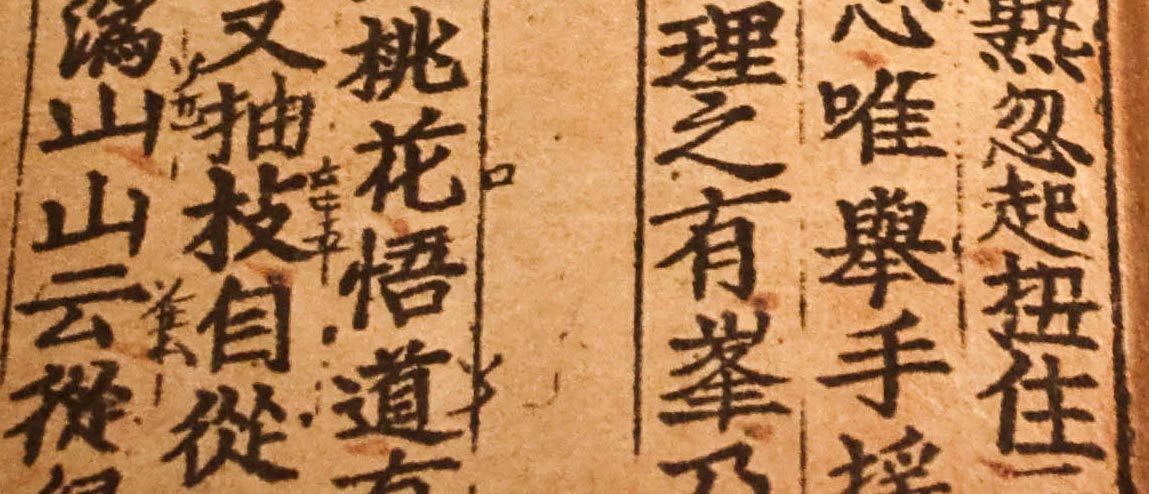
Above: detail from early book printed with movable type, from the Goryeo dynasty (13th century). Movable type printing, as well as woodblock printing, existed in East Asia hundreds of years before its use in Europe, well before Gutenberg’s printing press. [Image credit: Jonathan Harrell, bit.ly/1st4Eow.]
Where we are unaware of actual connections between cultures, we might assume that they didn’t extist. But new knowledge often changes our understanding. Under Mongol rule Korea and China grew close, envoys and traders moved freely between the two countries, and there was also a sea trade linking Korea to China and beyond. The conditions existed for the transmission of technological know-how from Korea to Europe, although documented record of that news has not survived.
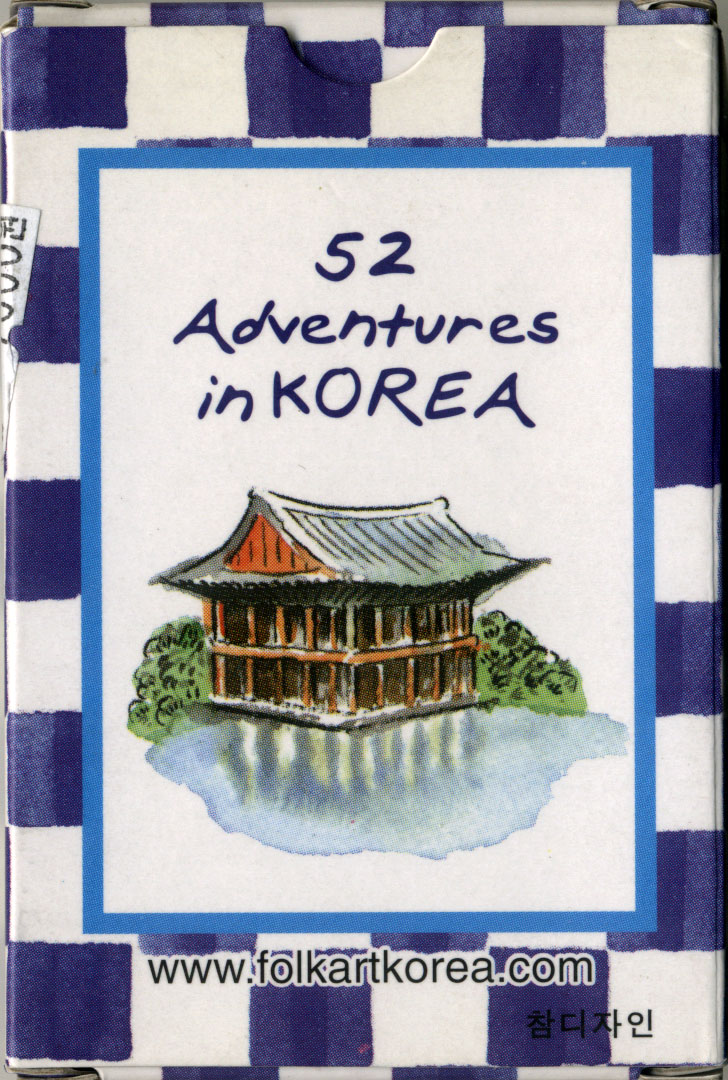
Above: '52 Adventures in Korea' souvenir playing cards.
HWATU CARDS 화투
There are many different editions of Korean ‘Hwatu’ cards, click the links below.
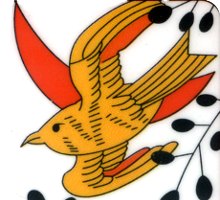
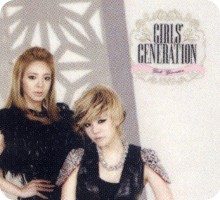
Above: Girls' Generation playing cards see more →
It had also been suggested that Korean playing-cards derive from the ceremonial use of the arrow in divination, which afterward became an amusement using sticks, owing to an arrow feather motif on the backs of some cards. But the theory hasn't been substantiated.
The Korean word for playing cards means “fighting strips” and cards traditionally used in Japan and Korea are small in size compared to Western ones. Korean cards on the whole are narrow (about half an inch) and much longer than Chinese (up to six or seven inches) and made of oiled paper or leather, based on a similar system to Chinese cards. Often the cards have stylised or stereotyped motifs making it difficult to trace their original forms. Kapo cards have 60 or 80 cards: six or eight sets of nine cards each plus a General in each suit. The suit symbols are: man, fish, crow, pheasant, antelope, rabbit, horse and star. The game played is similar to Japanese Kabu.
The game of “Hanafunda” was introduced into Korea by the Japanese during the time of Japanese annexation of Korea (1905-1945) and modified somewhat by the Koreans into “Hwatu” or “Hwa-tu”. The game uses “Hwatu” (flower cards) to score as many points as possible in order to win. Both the deck and the game have now become part of Korean tradition, with new branded or themed variants being devised such as Seoul Tower Hwatu, Dragon Hwatu, Waddamda, Royal Gold Hwatu, Diamond Brand, Rainbow Brand, Wonder Girls Hwatu, etc., with new colours, superimposed images and English inscriptions, all taking the place of the original Japanese-style Hanafuda cards.
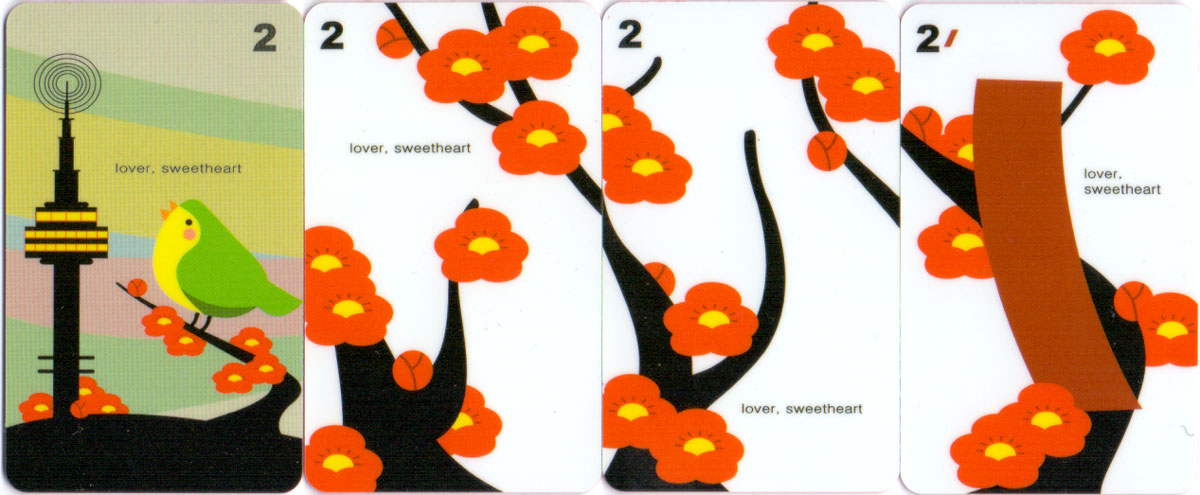
Above: Seoul Tower Hwatu published by Miracle Fish ©2008 see more →
Korea is quite a conservative country and has only had its own government since 1948, so everything is relatively new and developing (although they are developing very quickly, like Singapore). South Korea's leading playing card manufacturer is Hanyang Special Printing Co Ltd, Seoul, producing standard, promotional, educational, K-Pop and novelty packs. Indeed, foreign influence is now on the ascendant in Korea, and Korean Pop Group and merchandising playing cards have arrived... See also: T-Ara • B1A4 • Girls' Generation →
Korean Popular Music Playing Cards 한국어 인기 음악 카드
A K-Pop (Korean Pop, 가요, kayo) idol is an influential Korean celebrity, usually a K-Pop singer, who has a large fan base and is so well-liked by some fans to the point of addiction, obsession and compulsive behaviour. K-Pop idols are now becoming very popular outside Asia and some have even received worldwide media attention. In addition to music, K-pop has grown into a popular subculture among teenagers and young adults around the world driving reality TV shows, fashion and merchandise...
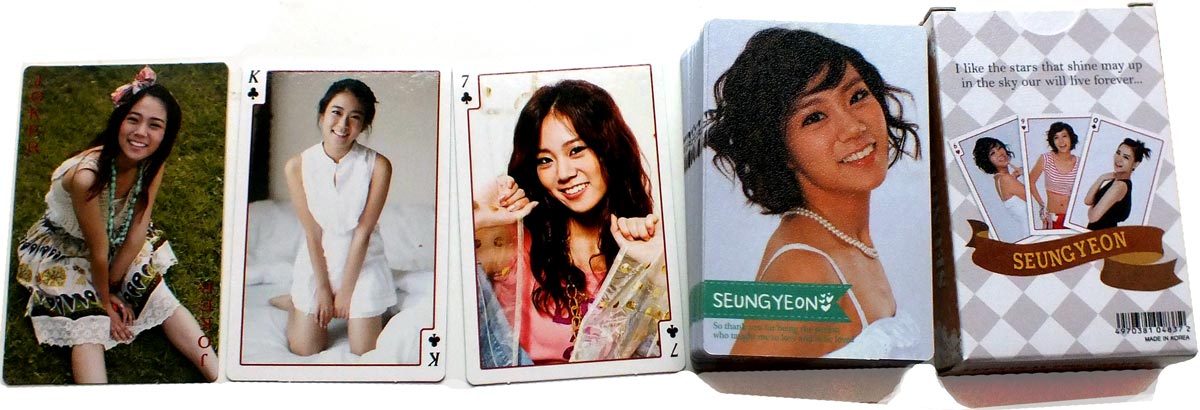
Above: Seung-Yeon playing cards, 52 plastic coated cards + 2 Jokers in box, made in South Korea. Each card has a different 'cute' photo of the singer. The box carries the caption:"I like the stars that shine way up in the sky our will live forever..." whilst the backs of the cards read: "So thank you for being the person who taught me to love and to be loved".
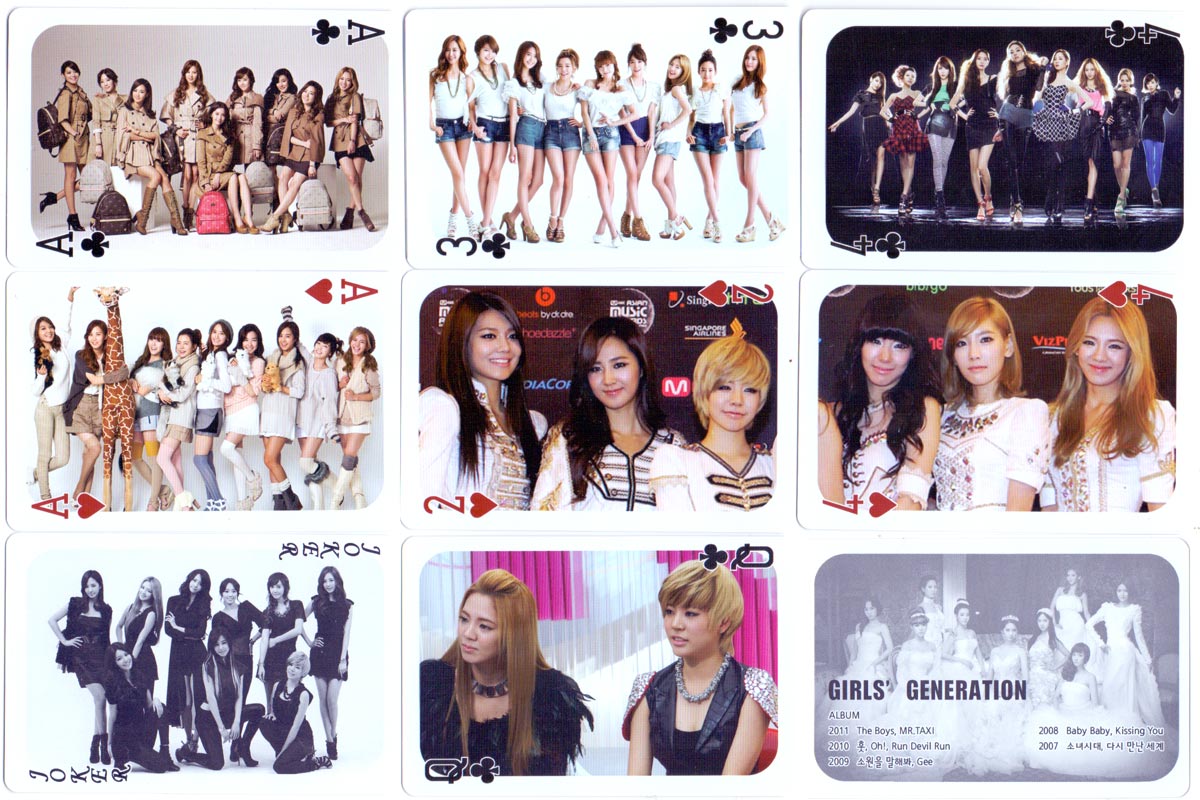
Above: Girls’ Generation playing cards designed by Rina Communication, Korea, 2011 see more →
“Best Wishes” Mini-Poker Children’s Playing Cards

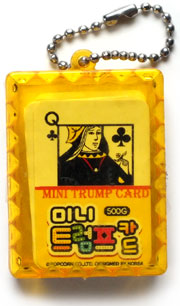
Above: cards and box from "Best Wishes Poker" miniature children's playing cards, anonymous manufacturer, Korea. 52 cards + 2 Jokers + extra card in box. Korean proverbs are printed on some cards. The Joker has the legend: "Let my wild part remain, untamed and running free" whilst on the backs we can read: "Friendship is like money, easier make than kept". The extra card reads: "Live with your own game, from words to deeds is a great space". The images of dolls are repeated in each suit, and some of the hearts suit symbols are up-side-down.
References:
Christensen, Thomas: “Gutenberg and the Koreans: Did East Asian Printing Traditions Influence the European Renaissance?” in "River of Ink: literature, history and art", Counterpoint, Berkeley, Ca, 2014.
Hargrave, Catherine Perry: A History of Playing Cards and a Bibliography of Cards and Gaming, Dover Publications, New York, 1966
Hoffmann, Detlef: The Playing Card, an illustrated history, Edition Leipzig, 1973
Mann, Sylvia: All Cards on the Table, Jonas Verlag/Deutsches Spielkarten-Museum, Leinfelden-Echterdingen, 1990


By Simon Wintle
Member since February 01, 1996
Founder and editor of the World of Playing Cards since 1996. He is a former committee member of the IPCS and was graphics editor of The Playing-Card journal for many years. He has lived at various times in Chile, England and Wales and is currently living in Extremadura, Spain. Simon's first limited edition pack of playing cards was a replica of a seventeenth century traditional English pack, which he produced from woodblocks and stencils.
Related Articles

Seoul Tower Hwatu
This special ‘Hwatu’ card set has all the traditional 48 flower cards given a modern graphic treatme...

Girls’ Generation
“Girls’ Generation” (Korean: 소녀시대; Sonyeo Shidae) is a nine-member South Korean pop girl group forme...

Adventures in Korea
Each card has a colour drawing of a Korean building, museum or tourist attraction with a brief descr...

Korean Hwatu
Hwatu (화투) cards originally came about because gambling with four-suited decks was outlawed. This ba...

Hwatu
Hwatu - Korean Flower Cards. The cards are printed on thick, red plastic, instead of the laminated b...

Korea
The game of Hanafunda was introduced into Korea by the Japanese and modified somewhat by the Koreans...
Trending Articles
Popular articles from the past 28 days



